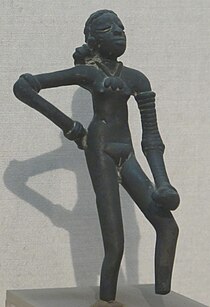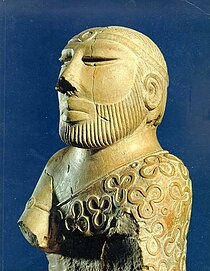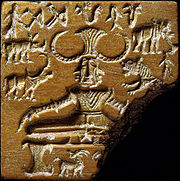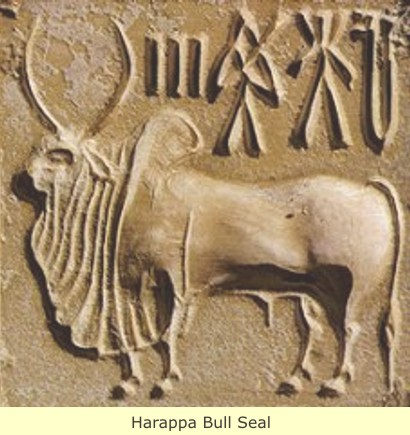-
Welcome to Religious Forums, a friendly forum to discuss all religions in a friendly surrounding.
Your voice is missing! You will need to register to get access to the following site features:- Reply to discussions and create your own threads.
- Our modern chat room. No add-ons or extensions required, just login and start chatting!
- Access to private conversations with other members.
We hope to see you as a part of our community soon!
You are using an out of date browser. It may not display this or other websites correctly.
You should upgrade or use an alternative browser.
You should upgrade or use an alternative browser.
4000 Year Old Lord Vishnu Statue
- Thread starter Andal
- Start date
Aupmanyav
Be your own guru
Both Sanskrit and Tamil are old. Both are my mothers. Don't bring his parents into this. Vedas are a part of Hinduism and not the whole.You do know that Tamil is older than Sanskrit and can be considered more Holy than Sanskrit for many Hindu's. You seem to only know what your parents have taught you.
Last edited:
Aupmanyav
Be your own guru
As for the Vishnu idol. Scientific history does not go like this. 4,000 years old? Where from the influence went to Vietnam? Tamralipti, Odisha, Andhra, Tamilnadu? Are there equivalent sculptures in these areas which date from 2,000 BC? Compare them with what the Indus valley Indians were doing in 2,000 BC. Do they seem to be done by people at the same level of competence? Probably the date of the Vishnu idol is not correct.








Last edited:
Maybe you forgot but more than half of this dir is filled with people not from India
really? Non-indians had recently got familiar with Veda some centuries ago, with the mercy of max muller like so called scholars. Before that all non-indians were totally unaware of what's veda and its teachings.
You do know that Tamil is older than Sanskrit and can be considered more Holy than Sanskrit for many Hindu's. You seem to only know what your parents have taught you. Please read some more.
Impossible ! According to Hindu scriptures, Sanskrit is oldest and primary language. It is the language which is spoken in Hindu heavens. According to Bhavishya Purana, In kaliyuga , there are TWO types of languages. 1] Prakrut 2] Mleccha . Prakrut languages are all indians languages including tamil as well. It was created for lower varnas like vaishya/Shudra varna but in the flow of time Brahmanas and Kshatriyas too adopted this Prakrut languages neglecting sanskrit language.
Whereas mleccha languages are the languages which are spoken outside the boundary of Bharatavarsha. There it is said that when sanskrit crosses the boundary of bharatavarsha, it becomes very much adulterated and becomes a mleccha language having unclear pronunciation.
Sri Lanka, Bali, and Nepal are the three places outside of India where Hinduism has been going on for a very long time AND has stayed large.
Not true at all ! Lanka, Bali and Nepal all are parts of Bharavarsha and afghanistan as well .History say that once the major population of afghanistan was a HINDU POPULATION.
Vietnam is a part of ancient Bharatvarsha. The oldest name of India was Aryavarta later it became jambudvipa and then Bharatvarsha. Puranas mention India as the landmass that stretches from the snowy peaks of Himalayas to the splashing Indian Ocean. Bharatavarsha has nine divisions named Indradweep, Kaseru, Tamraparn, Gamastiman, Nagdweep, Soumya, Gandharva, Varun and Yahadweep which is surrounded by the sea and has an expansion of 1000 Yojans.
In Hymns 2.1.31 and 2.1.32, the Vishnu Puraan states-
See the map of ancient Bharata :
https://www.google.co.in/search?q=m...2Fforum%2Findex.php%3Ftopic%3D32957.0;583;396
Indra dweep - Andaman
Naga dweep - Nicobar
Saumaya Dweep- sumatra
Gandharva Dveep- Philippines
Varun dweep - Borneo
Kauderman Dveep- Sulawesi
Gabastiman Dveep- Papua New Guinea
Tamrabarani Dweep - Shri Lanka
Kumaika Dweep - Bharatvarsha [ Vietnam included in Bharatvarsha ]
It may be noted that except Bharatvarsha, all are Islands.
Vishnu Puraan states-
Naga dweep - Nicobar
Saumaya Dweep- sumatra
Gandharva Dveep- Philippines
Varun dweep - Borneo
Kauderman Dveep- Sulawesi
Gabastiman Dveep- Papua New Guinea
Tamrabarani Dweep - Shri Lanka
Kumaika Dweep - Bharatvarsha [ Vietnam included in Bharatvarsha ]
It may be noted that except Bharatvarsha, all are Islands.
Vishnu Puraan states-
उत्तरं यत्समुद्रस्य हिमाद्रेश्चैव दक्षिणम् ।
वर्षं तद् भारतं नाम भारती यत्र संततिः ।।
वर्षं तद् भारतं नाम भारती यत्र संततिः ।।
The country lying North of the Ocean and South of the snowy mountains is called Bhārat; There dwell the descendants of Bharat.
In Hymns 2.1.31 and 2.1.32, the Vishnu Puraan states-
Rishabh was born to Merudevi, Bharat was born to Rishabh,
Bharatvarsha was named from Bharat, and Sumati arose from Bharat. [2.1.31]
This country is known as Bharatavarsha,
Since the time the father entrusted the Kingdom to the son,
And himself went to the forest for ascetic practices. [2.1.32]
Last edited:
Vinayaka's point I believe, he can correct me if I am wrong in my reading of his reply, is that what we think of "India" (modern term for Bharat) was much larger than today.
I agree.
Some think with a mindset or position in time as if the populations of people we see today was also true then. In fact, thousands of years ago large portions of Europe had no populations at all, there were areas of India with very small populations and not even the same mix as we see today. Humans are capable of much more in ability and "get up and go" than some give them credit for, and migrated huge distances over time. What we think of the shapes of continents has drastically changed over time due to acts of God, earthquake, weather, the movements of the earth's plates and pressures of the oceans and the fire core upon plates and even the effects of other planets, asteroids etc.. The bridge between India and Lanka could still be crossed by foot up until the cyclone of 1480 AD did it's damage. The stars in ancient times, often used for navigation and influencing humam migration, were not in the same positions as today. Entire currents in oceans have reversed direction. The magnetic poles have flipped multiple times in the course of humans.
Do not think in the bubble of the pond you currently swim in, they appear, disappear, reappear, rivers move and change entire courses they traverse. Rivers bring down gold from the highest mountains that was hidden deep in the veins of quartz in tall mountains and then tumble this gold as placer into the deep and low deserts which were once moist. The very quartz that were full of veins of gold rose up from nowhere into the sky before nature riped out this gold from such mountain veins as gold, the heaviest yet soft metal, worked it's natural course of gravity downward due to weight yet it's soft nature hide it under the cracks of stream, river and ocean bolders but not under the back of boulders as water and glacers pushed against them but incredibly in front of such boulders as it squeezed around the bottom edges and deep into the crevices in front of the boulder as if trying to return to the earth's core. Yet it gets moved again. By nature. By humans. The gold one people find at their very feet and laying there was not always there. It likely came great distances unknown to them. The same course of nature can take a human object and cast it here and there, and literally throw it 10,000 miles away. You may find ancient artifacts in one place simply because by coincidence nature, wind, water, may not have been as harsh it tearing it apart, yet in another area which may have had castles to the sky not one thing remains today as it was torn to nothing and literally eaten by small insects and termites, carried away by swarms of birds, some which no longer even exist, or even humans themselves, even their own creators, destroyed.
But one thing is for sure. There are no borders to humans. None.
Om Namah Sivaya
I agree.
Some think with a mindset or position in time as if the populations of people we see today was also true then. In fact, thousands of years ago large portions of Europe had no populations at all, there were areas of India with very small populations and not even the same mix as we see today. Humans are capable of much more in ability and "get up and go" than some give them credit for, and migrated huge distances over time. What we think of the shapes of continents has drastically changed over time due to acts of God, earthquake, weather, the movements of the earth's plates and pressures of the oceans and the fire core upon plates and even the effects of other planets, asteroids etc.. The bridge between India and Lanka could still be crossed by foot up until the cyclone of 1480 AD did it's damage. The stars in ancient times, often used for navigation and influencing humam migration, were not in the same positions as today. Entire currents in oceans have reversed direction. The magnetic poles have flipped multiple times in the course of humans.
Do not think in the bubble of the pond you currently swim in, they appear, disappear, reappear, rivers move and change entire courses they traverse. Rivers bring down gold from the highest mountains that was hidden deep in the veins of quartz in tall mountains and then tumble this gold as placer into the deep and low deserts which were once moist. The very quartz that were full of veins of gold rose up from nowhere into the sky before nature riped out this gold from such mountain veins as gold, the heaviest yet soft metal, worked it's natural course of gravity downward due to weight yet it's soft nature hide it under the cracks of stream, river and ocean bolders but not under the back of boulders as water and glacers pushed against them but incredibly in front of such boulders as it squeezed around the bottom edges and deep into the crevices in front of the boulder as if trying to return to the earth's core. Yet it gets moved again. By nature. By humans. The gold one people find at their very feet and laying there was not always there. It likely came great distances unknown to them. The same course of nature can take a human object and cast it here and there, and literally throw it 10,000 miles away. You may find ancient artifacts in one place simply because by coincidence nature, wind, water, may not have been as harsh it tearing it apart, yet in another area which may have had castles to the sky not one thing remains today as it was torn to nothing and literally eaten by small insects and termites, carried away by swarms of birds, some which no longer even exist, or even humans themselves, even their own creators, destroyed.
But one thing is for sure. There are no borders to humans. None.
Om Namah Sivaya
Last edited:
Maya3
Well-Known Member
Sorry if I sounded confrontational it wasn't intended. :sorry1:
The people of Funan, the area where this statue was found, were Cambodians. We all know that the Cambodians were Hindus long before they became Buddhists. South East Asia was on the trade route between China and India and so bound to be influenced by one or other of those two more advanced cultures, and India was the one they all favoured. But, having been trained as an archeologist, I do tend to get a bit exasperated when sweeping claims are made on the basis of one artefact.
Honestly this was my first thought too. If they get more evidence then it would be really interesting, but as of now can they really know that this is Vishnu?
Maya
Aupmanyav
Be your own guru
That is not correct Geology. Continents moved some 200 million years ago and not in human history of just 200,000 years. Mediterranian filled up around 5.33 million years ago (Zanclean flood). English Channel floods occured 450,000 and 225,000 years ago. Caspian filled up around 14,000 BC, and Black Sea filled up around 5,600 BC. Of course, Bering had an ice-bridge and when the sea levels were low, it might have been possible for Indians to walk over to Srilanka (during the last Asian ice-age 18,000 years ago. In North America glacial conditions existed till 8,000 BC). What you say about stars is true, and RigVeda records the changes from 4,000 BC if not earlier than that.What we think of the shapes of continents has drastically changed over time due to acts of God, earthquake, weather, the movements of the earth's plates and pressures of the oceans and the fire core upon plates and even the effects of other planets, asteroids etc.. The bridge between India and Lanka could still be crossed by foot up until the cyclone of 1480 AD did it's damage. The stars in ancient times, often used for navigation and influencing human migration, were not in the same positions as today.
Last edited:
Vinayaka's point I believe, he can correct me if I am wrong in my reading of his reply, is that what we think of "India" (modern term for Bharat) was much larger than today.
Yes, you got it right. We all have to think twice on all countries when we hear Ancient _______. Borders have changed over time.
Just as a point of interest on languages, there were over 500 indigenous languages in North America, and some fairly 'advanced' societies.
GoodbyeDave
Well-Known Member
The last Hindus in Afghanistan were forcibly converted in 1896, but some fled and their descendants, the Kalash, survive in Pakistan, despite persecution there. The keep up some Vedic customs and worship Indra, among others.Hinduism♥Krishna;3831101 said:History say that once the major population of Afghanistan was a HINDU POPULATION.
Apparently some are still there, unless Moslems are worshiping in the temples.
Hindu Temples of Kabul - Wikipedia, the free encyclopedia
Hindu Temples of Kabul - Wikipedia, the free encyclopedia
bp789
Member
Apparently some are still there, unless Moslems are worshiping in the temples.
Hindu Temples of Kabul - Wikipedia, the free encyclopedia
As far as I am aware, the Afghan Hindus are descendants of Indian traders and merchants that settled in Afghanistan when Afghanistan was under the control of the Sikh Empire, which is why they speak languages like Punjabi and Sindhi, along with the local languages. There might be some "indigenous" Afghan Hindus, but if they still exist, they are either a really small minority or they intermarried with the other Hindu groups.
Here's a fairly recent article on where some who have fled have settled. We're off topic and I'll stop at this.
Temples: Afghan Hindus Stand Strong in Germany - Magazine Web Edition > July/August/September 2012 - Publications - Hinduism Today Magazine
Temples: Afghan Hindus Stand Strong in Germany - Magazine Web Edition > July/August/September 2012 - Publications - Hinduism Today Magazine
Aupmanyav
Be your own guru
There are still some Hindus in Afghanistan (Sikhs and Hindus now number some 3,000 - Link). Kalash are not exactly Hindus, they may have been Vedic earlier. http://www.afghanhindu.info/The last Hindus in Afghanistan were forcibly converted in 1896, but some fled and their descendants, the Kalash, survive in Pakistan, despite persecution there. The keep up some Vedic customs and worship Indra, among others.
Hindu-Sikh marriage will not raise any eye-brow either in India or in Afghanistan.
Last edited:
